Masked julie - Julidochromis transcriptus
Scientific name: Julidochromis transcriptus
Common name: Masked julie
Family: Cichlidae
Usual size in fish tanks: 6 - 7 cm (2.36 - 2.76 inch)
014
Recommended pH range: 8 - 8.9
Recommended water hardness: 18 - 30°N (321.43 - 535.71ppm)
0°C 32°F30°C 86°F
Recommended temperature range: 22 - 25 °C (71.6 - 77°F)
The way how these fish reproduce: Spawning
Where the species comes from: Africa
Temperament to its own species: peaceful
Temperament toward other fish species: peaceful
Usual place in the tank: Middle levels
Origin
The Masked Julie (Julidochromis transcriptus) is native to the rocky shorelines of Lake Tanganyika in Africa. This natural habitat is characterized by high water hardness and alkaline conditions, which should be replicated in the aquarium to keep them healthy. They are commonly found hiding among rocks and crevices in the lake, so creating a similar environment in captivity is crucial for their well-being.
Tank Requirements
Masked Julies thrive in an aquarium that mimics their natural habitat. A minimum tank size of 60 liters (15 gallons) is recommended for a small group. The water conditions should be maintained at a pH range of 8-8.9, with hardness between 18-30°N (321.43-535.71 ppm) to replicate the alkaline environment of Lake Tanganyika. The water temperature should be kept between 22-25°C (71.6-77°F).
These fish prefer a substrate of smooth sand or small-grained gravel to prevent injury to their delicate undersides. The tank should be decorated with plenty of rocks and caves to provide hiding spots, as Masked Julies are timid and often retreat to these spaces. Low lighting is also preferred, as they tend to be more active and visible when the aquarium is dimly lit. They typically occupy the lower levels of the tank, rarely venturing far from their chosen hiding spots.
Tankmates
Masked Julies are peaceful towards their own species and other similarly sized cichlids. However, they are best kept with other cichlids from Lake Tanganyika that have different colorations to prevent hybridization. Suitable tankmates include:
- Fairy Cichlid (Neolamprologus brichardi)
- White Lamprologus (Altolamprologus calvus)
- Slender cichlid (Cyprichromis leptosoma)
Avoid keeping them with aggressive or much larger cichlids, as this could cause stress and territorial disputes. Providing plenty of hiding places and territories in the tank will help reduce conflicts and create a more harmonious environment.
Food and Feeding
Masked Julies are not fussy eaters and will accept a variety of foods. A diet consisting of high-quality flakes, cichlid pellets, and occasional servings of live or frozen foods such as brine shrimp is ideal. Feeding them small meals several times a day is recommended over larger meals to accommodate their small stomachs and prevent digestive issues.
To ensure proper nutrition, it's important to vary their diet. Include vegetable-based foods occasionally, as this will help in maintaining their health and vibrant coloration. Avoid overfeeding to prevent water quality issues, as they are sensitive to sudden changes in water conditions.
Sexing
Sexing Masked Julies can be challenging, but it is generally believed that females are slightly larger than males. However, there are no prominent visual differences between the sexes, making it difficult to distinguish them without observing their behavior during breeding.
Breeding
Masked Julies are cave spawners, and breeding them requires a tank environment that offers plenty of hiding spots and rockwork. They are known to be timid, so it's essential to place the breeding tank in a quiet area with minimal human traffic to prevent disturbances. It is best to start with a group of juveniles and allow them to form pairs naturally. Once a pair has been established, remove the other fish to reduce stress and competition.
The pair will lay their eggs in a cave, and the parents will take turns guarding the fry once they hatch. Initially, the parents may eat the eggs, but they will learn to be excellent caregivers over time. To increase the success rate, it is advisable to add baby brine shrimp to the tank for the fry to feed on. For better survival rates, the fry can be moved to a separate tank once they are free-swimming and capable of finding food in the water column.
Lifespan
With proper care, the expected lifespan of Julidochromis transcriptus is around 8 years, making them a long-term commitment for aquarists.
Short Description
Masked Julies are one of the smallest members of their family and are a suitable choice for beginner cichlid keepers. They are known for their peaceful nature but can be shy and reclusive, preferring to hide among rocks and caves in the aquarium. Despite their timid behavior, they are relatively easy to care for as long as their specific water requirements are met. Masked Julies thrive in hard, alkaline water and are more tolerant of weekly water changes than previously thought.
These cichlids are an excellent addition to species or community tanks, as long as they are kept with other peaceful species. However, care should be taken to avoid keeping them with similarly colored fish to prevent hybridization. Providing a well-structured tank with plenty of hiding places will help them feel secure and encourage them to display their natural behaviors.
Picture
Thaks to Ted Judy. Also, some pictures were bought by aqua-fish.net from jjphoto.dk.




 Thread-finned
Thread-finned 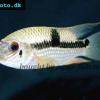 Acara
Acara  Yellow
Yellow  Patrick's
Patrick's  Blue
Blue  Green
Green 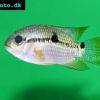 Acara
Acara  White
White  Compressed
Compressed 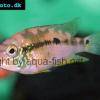 Pastel
Pastel  Midas
Midas  Red
Red  Bluemouth
Bluemouth  False
False 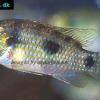 African
African  Agassiz's
Agassiz's  Banded
Banded 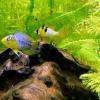 Yellow
Yellow  Cockatoo
Cockatoo  Blue
Blue  Blackstripe
Blackstripe  Highfin
Highfin  Redstripe
Redstripe  Threadfinned
Threadfinned  Macmaster’s
Macmaster’s 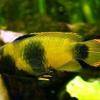 Panda
Panda  Norbert’s
Norbert’s 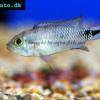 Blue
Blue  Thin-line
Thin-line  Three-striped
Three-striped  Viejita
Viejita 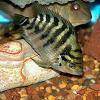 Flier
Flier  Archocentrus
Archocentrus  Convict
Convict  Seven
Seven  Spiny
Spiny  Oscar
Oscar  Sunshine
Sunshine  Chitande
Chitande  Firebird
Firebird  Midnight
Midnight  Lake
Lake  Sunshine
Sunshine  Aulonocara
Aulonocara  Nyasa
Nyasa 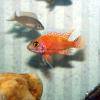 Ruby
Ruby  Grants
Grants  Aulonocranus
Aulonocranus  Chameleon
Chameleon  Benitochromis
Benitochromis  Orinoco
Orinoco  Yellow
Yellow 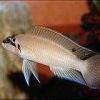 Brichard’s
Brichard’s  Guenther’s
Guenther’s  Southern
Southern  Cichla
Cichla 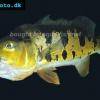 Peacock
Peacock  Chiseltooth
Chiseltooth  Bolivian
Bolivian  Red
Red  Many-pointed
Many-pointed  Jack
Jack  Red
Red  Three
Three 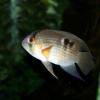 Keyhole
Keyhole  Azureus
Azureus  Red
Red  Jackson’s
Jackson’s  Crenicichla
Crenicichla  Honduran
Honduran  Blue-eye
Blue-eye  Afra
Afra 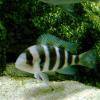 Frontosa
Frontosa  Slender
Slender  Malawi
Malawi  Chequerboard
Chequerboard  Checkerboard
Checkerboard  Malawi
Malawi  Ectodus
Ectodus  Tanganyika
Tanganyika  Canara
Canara  Green
Green  Rostratus
Rostratus  Pearl
Pearl 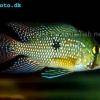 Geophagus
Geophagus  Yellowhump
Yellowhump  Suriname
Suriname  Redhump
Redhump  Red
Red  Dority’s
Dority’s  Argentine
Argentine 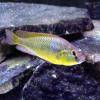 Burton’s
Burton’s  Victoria
Victoria 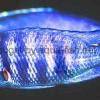 Haplochromis
Haplochromis  Jewel
Jewel  Banded
Banded 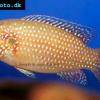 Lifalili
Lifalili  Lowland
Lowland  Texas
Texas  Pantano
Pantano  Severum
Severum  Banded
Banded 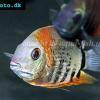 Severum
Severum  Rainbow
Rainbow  Parrot
Parrot  Chocolate
Chocolate  Brown
Brown  Marlieri
Marlieri  Golden
Golden  Striped
Striped 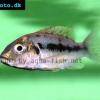 Konye
Konye  Blue
Blue  Trewavas
Trewavas  Electric
Electric  Dwarf
Dwarf  Redbreast
Redbreast  Lamprologus
Lamprologus  Gold
Gold 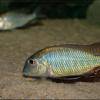 Greenface
Greenface 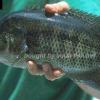 Mayan
Mayan  Aurora
Aurora  Blue
Blue  William’s
William’s 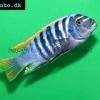 Zebra
Zebra  Malawi
Malawi  Blue
Blue 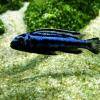 Blue
Blue  Mbuna
Mbuna  Parallel
Parallel  Purple
Purple  Flag
Flag  Bolivian
Bolivian  Ram
Ram  Basket
Basket 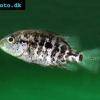 Haitian
Haitian  Zebra
Zebra  Striped
Striped  Neolamprologus
Neolamprologus  Brevis
Brevis  Fairy
Fairy 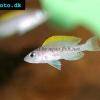 Neolamprologus
Neolamprologus  Cylindricus
Cylindricus  Hecq’s
Hecq’s  Neolamprologus
Neolamprologus  Lemon
Lemon  Mustax
Mustax  Daffodil
Daffodil  Six-bar
Six-bar  Five-bar
Five-bar  Marbled
Marbled 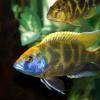 Giraffe
Giraffe  Blue
Blue  Sulphurhead
Sulphurhead  Wolf
Wolf  Jaguar
Jaguar  Blue
Blue  Marakeli
Marakeli  Madagascar
Madagascar  Pinstripe
Pinstripe  Pelmatochromis
Pelmatochromis  Kribensis
Kribensis 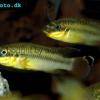 Striped
Striped  Red
Red  Deepwater
Deepwater  Fenestratus
Fenestratus  Nichols’
Nichols’  Southern
Southern  Bumble
Bumble  Demason’s
Demason’s  Slender
Slender  Red
Red  Mbuna
Mbuna  Malawi
Malawi  Kenyi
Kenyi  Powder
Powder  Altum
Altum  Angelfish
Angelfish  Angelfish
Angelfish 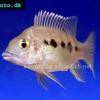 East
East  Juba
Juba  Earth
Earth 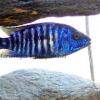 Electric
Electric  Azure
Azure 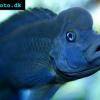 Lionhead
Lionhead  Discus
Discus  Blue
Blue  Red
Red  Zebra
Zebra  Brichard’s
Brichard’s  Blue
Blue  Firemouth
Firemouth  Zebra
Zebra  Yellow
Yellow  Blue
Blue  Dwarf
Dwarf  Blunthead
Blunthead 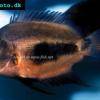 The
The  White
White  Twoband
Twoband  Fenestratus
Fenestratus  Window
Window  Tailbar
Tailbar  Black
Black  Redhead
Redhead 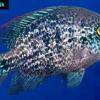 Oaxaca
Oaxaca  Xenotilapia
Xenotilapia